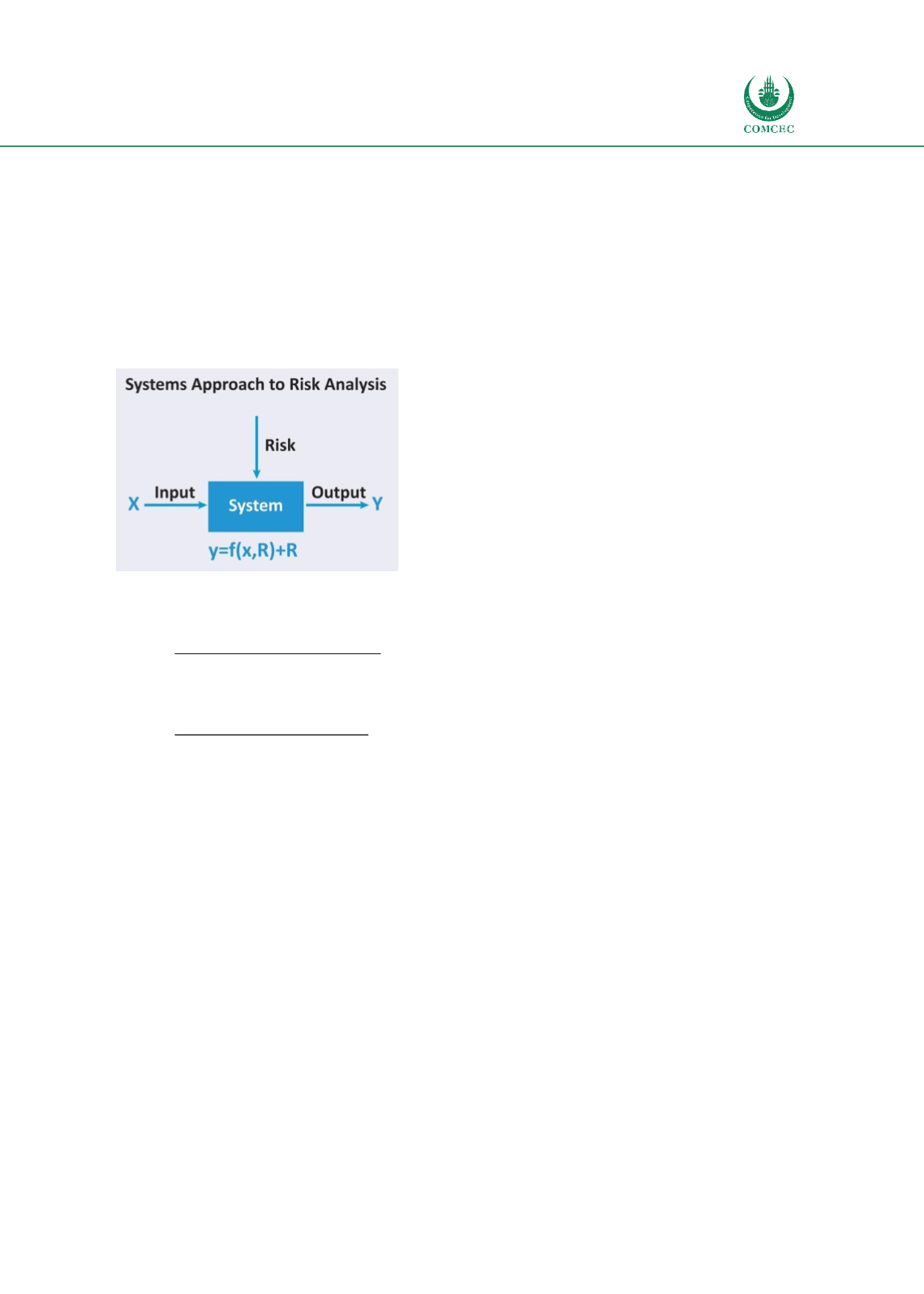

Facilitating Trade:
Improving Customs Risk Management Systems
In the OIC Member States
153
6.2.3
Risk Management Cycle
Policy Option 1: Clear definition and procedures for the concept of measurement, object
of measurement and methods of measurement of risk and the possible consequences of
high level of uncertainty
;
CAs must understand how to measure risks and uncertainty already
identified in the first stage of the cycle; they can effectively implement risk analysis process as
the base for all next stages of the risk management cycle. Changing the input parameters in the
CRM will allow output simulation. The CRM operates in highly uncertain environments that
produce a high level of risk.
Figure 51: Systems approach to risk analysis
Author’s compilation
The following risk factors should be included in the equation:
Environmental risk factors. For example, if a trader has been identified as non-
compliant in valuation, this is something that can be part of environmental risk factors.
The question here is how risk analysts will know what the traders can do in the
uncertain future.
Input variable risk factors. Additionally, there will always be the risk related to input
indicators. For example, different country of origin, exporter, type of goods, etc. and
their specific combination can present a risk to collect import customs duties. Again, the
CRM has a tool to quantify measure and analyze using ranges. For example, Monte Carlo
simulation (not mentioned ISO Standard 31010:2009) can be used when it comes to
risks related to ranges of data
Policy Option 2: Use of advanced techniques and tools for risk assessment (identification,
analysis and evaluation and prioritization);
Risk Identification
: The ISO Standard 31010:2009 recommends techniques that can be used at
the risk identification stage: brainstorming, Delphi technique, structured or semi-structured
interviews, use of check-lists, primary hazard analysis, Hazard and Operability Studies (HAZOP),
Hazard Analysis and Critical Control (HACCP), environmental risk assessment, scenario
analysis, Structure
“
What if?
”
(SWIFT)
;
Failure mode effect analysis (FMEA), and Cause-and-
effect analysis (Fishbone analysis).
Risk Analysis
: Techniques and tools proposed by the ISO Standard 31010:2009: Bayesian
statistics and Bayes nets, Bow tie analysis, Cause-and-consequence analysis, Cause-and-effect
analysis, Consequence/probability matrix, Cost/benefit analysis, Decision tree, Environmental
risk assessment, Event tree analysis, Failure mode effect analysis, Fault tree analysis, FN curves,
Hazard Analysis and Critical Control (HACCP), Hazard and Operability Studies (HAZOP), Human
reliability analysis, Layer protection analysis, Markov analysis, Multi-criteria decision analysis,
















